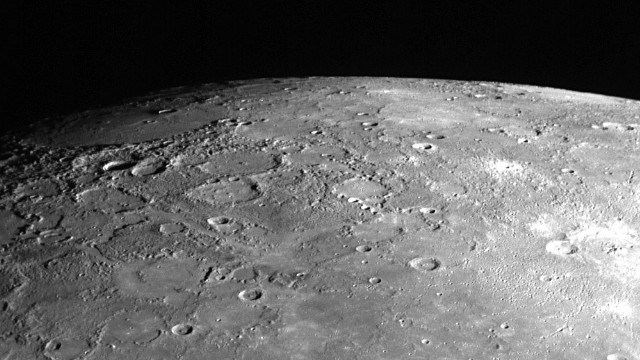Mercury probe points to different origin for 1st planet
September 18, 2012 -- Updated 2250 GMT (0650 HKT)

High levels of magnesium and sulfur on the surface of Mercury, suggest its makeup is far different from other planets.
-
The unmanned orbiter has
been beaming back data from the first planet for a year and a half.
Readings from its X-ray spectrometer point to a planet whose northern
volcanic plains formed through upwellings of rocks more exotic than
those often found on the Earth, the Moon or Mars, said Shoshana Weider, a
researcher at the Carnegie Institution of Washington.
-
"Before this MESSENGER
mission, a lot of people assumed it was very like the Moon -- it's dark,
it's grey," Weider said. But while the Moon's surface formed when light
materials floated to the top of an ocean of molten rock, the low level
of calcium on Mercury indicates that didn't happen there.
"This gives us clues to
the kind of precursor materials that accreted to form Mercury, in an
extremely oxygen-poor environment," Weider said.
-
-
The concentration of
sulfur on the surface is about 10 times that seen on Earth, she said.
And while Mercury's iron core "makes up a huge amount of the planet,"
very little is found at the surface.
The northern region of
volcanic plains differs significantly from the surrounding portion of
Mercury, where the surface -- as dated by the number of craters -- is
about a billion years older, Weider said.
-
The results were
published in the latest issue of the Journal of Geophysical Research, a
peer-reviewed publication of the American Geophysical Union. Weider and
her co-authors studied 205 different readings from the spectrometer to
produce their results.
-
MESSENGER -- an acronym
for the Mercury Surface Space Environment, Geochemistry and Ranging
mission -- has been orbiting Mercury since March 2011. It's only the
second spacecraft to reach the planet and the first to circle it.
-
It's about 5% the size
of Earth and revolves around the sun every 88 days. It rotates very
slowly -- once every 58 Earth days -- and the surface temperature on the
day side can reach 800 degrees Fahrenheit (425 C), according to NASA.


No comments:
Post a Comment